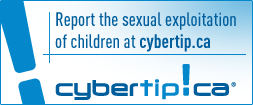Choice? Children and Youth in the Sex Trade
From the RESOLVE Newsletter
December 2008
Jennifer Berry
It is a commonly accepted myth that children and youth involved in the sex trade have chosen that life. Reality is that these children are being manipulated and sexually exploited because they are vulnerable. Children and youth often report that they are first exploited by an adult perpetrator known to them through family or friends. This adult perpetrator will offer the child or youth food, shelter, clothing, acceptance, love, and belonging in exchange for a sexual act (Scheirich, 2004). Children/youth who are unable to have their basic needs met by their traditional supportive family or extended families are exceptionally vulnerable to being sexually abuse through exploitation. Frequently, these families are unable to provide adequate support due to legacies of colonization, racism, gender inequities, poverty, etc.
The myth that children/youth "choose" their involvement in the sex trade becomes apparent when a child's options are weighed: For many children/ youth, their "choice" is actually a survival strategy. Their need for the basic necessities-food, shelter, clothing and love, direct them to their "choice." A realistic evaluation of child/youth involvement in the sex trade often indicates that there is no real choice.
Investigation into the welfare of sexually exploited children and youth reveals devastating effects on the child's mental, emotional, physical, and spiritual well being. Such effects can only be accurately translated as an extreme abuse of that child.
The sex trade has a very different culture than most of mainstream society and operates with a completely different set of cultural components (cognitive, economic, language, norms/rules, etc.), which regulate that group's behaviours, thoughts and values. These components are contrary to mainstream cultural norms and expectations. Socialization into these norms under conditions of violence and extreme danger for the child/youth creates a form of traumatic bonding with their peer group and their oppressors. Once a child/ youth has been conditioned, or "resocialized" into the sex trade culture, the transition back to mainstream culture is extraordinarily long and difficult.
Existence within the culture of the sex trade is filled with horrific physical and emotional abuses perpetrated toward these children/youth on a daily basis. Sometimes these abuses are perpetrated by the very people that are paid to care for them (police, social workers, foster parents, treatment workers, etc.). Children/youth are often demoralized, marginalized and filled with guilt and shame. These emotions are not theirs to carry or own but nonetheless, they do own these feelings for a very long time. For many children/youth, these feelings linger long after intervention.
The lack of trust in adults is enormous and it can take months, if not years, of consistent, non-judgmental treatment to break through the protective barriers they have created to survive. Often, these children create substance misuse barriers to numb the trauma they have suffered. Their substance misuse makes their transition process additionally difficult due to society's views of female alcohol and drug users as sick and deviant (Erickson, et al., 2000). Sexually exploited male children/youth also face a difficult transition process, as they have similar substance misuse issues combined with stigmas associated with sexual abuse perpetrated on males.
No matter how we look at it, these children and youth are victims of abuse. They deserve and yearn for the safety and securities afforded to any other child. All adults have the legal and moral responsibility to intervene appropriately. Intervention strategies include, but are not limited to, the use of provincial and federal legislation; awareness and education; use of culturally competent programming; addressing of systemic gaps; recognition of people who exploit children as child abusers-with appropriate measures taken to prosecute accordingly, etc. Such measures are necessary in order to ensure that these children are protected and provided for in a manner which conveys our belief and perspective that we will no longer blame the victim.
In the February 2009 issue, Jennifer Berry will continue with Part 2 of this article.

